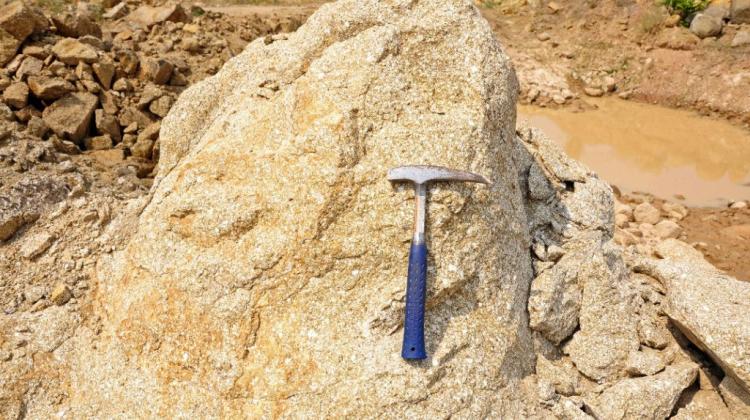Researchers will examine glacial erratics to better understand the last glaciation

Scientists will study about 60 glacial erratics in north-western Poland to better understand the course of the last ice age in our country. They will collect samples from all the rocks and - for the first time in history - examine them using cosmogenic isotopes dating.
The project is being carried out by the team led by Dr. Karol Tylmann from the Department of Marine Geology, Faculty of Oceanography and Geography of the University of Gdańsk.
The study will allow, among others, to determine the time frame of the last glaciation in Poland. "We want to find out when the ice sheet began to melt and leave the territory of our country. We also want to determine when completely left Poland" - Dr. Tylmann told PAP.
He noted out that in theory, a lot is already known on the subject. "We know that the ice sheet reached its maximum range probably 20,000 years ago, and it left Poland about 14,000 years ago. However, these data are not accurate: some sources claim that the ice sheet reached the maximum range about 21 or even 24 thousand years ago, and left our country about 12,000 years ago. The purpose of our studies is to clarify these data" - explained Dr Tylmann.
He added that because of other studies previously conducted by scientists from several countries today we already have accurate data on the course of the last glaciation in Germany, Denmark and Belarus, Lithuania and Russia. "Several years ago, the relevant research was performed in the north-eastern Poland. There are, however, no such data for north-western Poland. Isotopic tests of glacial erratics in this part of the country have not been carried out yet" - Dr. Tylmann told PAP.
"The data we collect will fill the gap in the studies on the last ice age in this part of Europe, and thus will allow to create a complete chronology of the last ice sheet in this large area" - said Tylmann.
Researchers will test the samples taken from about 60 glacial erratics located north of the line, on which are Leszno, Konin and Sierpc. Scientists carefully selected the erratics. They selected only the largest ones - with a circumference of more than five meters (some specimens have even more than 20 meters circumference), located on the flat surfaces of moraine hills, which were created at the head of the glacier.
According to researchers in the case of such rocks it can be said with very high probability that - after melting from the glacier thousands of years ago - they remained in the same place over millennia. The choice of such erratics - unmoved from the time of glacier crossing - was necessary because the tests, which will be performed on the samples, are based on one of the so-called cosmogenic isotopes, which are associated with the interaction of cosmic rays.
Reliable results in such studies may be provided only by samples from the surface of rocks which have not been moved. Last year, scientists collected samples of 30 erratics. Before any of these operations, even though it involves only a small interference in the rock, scientists had to obtain the consent of local governments of the areas in which the objects were located. This was necessary because most of the large glacial erratics have the status of natural monuments. Samples taken last year have already been sent to a specialized laboratory, where they are being studied.
In the autumn of this year, the team plans to collect samples from the remaining 30 erratics and send them for testing. "In the laboratory test the isotopic content will be determined in order to determine, among others, for how long the rock has been on the ground, so when it was melted from the glacier" - Dr. Tylmann told PAP. The authors assume that the results of their work will not only allow to determine the details of the course of the last glaciation in today\'s Poland, but also, to some extent, help predict the behaviour of the ice sheets that still exist on Earth. "The more we know about how the ancient ice sheets melted, the more we can tell about how the current ones will behave" - said Tylmann.
The project "The recession of the last Scandinavian ice sheet in Poland in the light of glacial erratics dating using cosmogenic isotope 10Be (DatErr)" began in July 2015 and will be completed in mid-2018.
The project team members also include Dr. Piotr Woźniak from the Department of Oceanography and Geography of the University of Gdańsk and Dr. Vincent Rinterknecht from the Laboratoire de Geographie Physique.
For their project, Dr. Tylmann\'s team acquired a grant in the amount of nearly 265 thousand zlotys in the competition Sonata of the National Science Centre.
PAP - Science and Scholarship in Poland
aks/ dym/ mrt/
tr. RL
Przed dodaniem komentarza prosimy o zapoznanie z Regulaminem forum serwisu Nauka w Polsce.


















